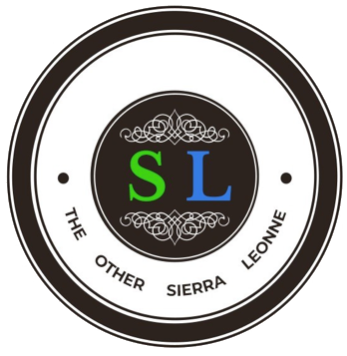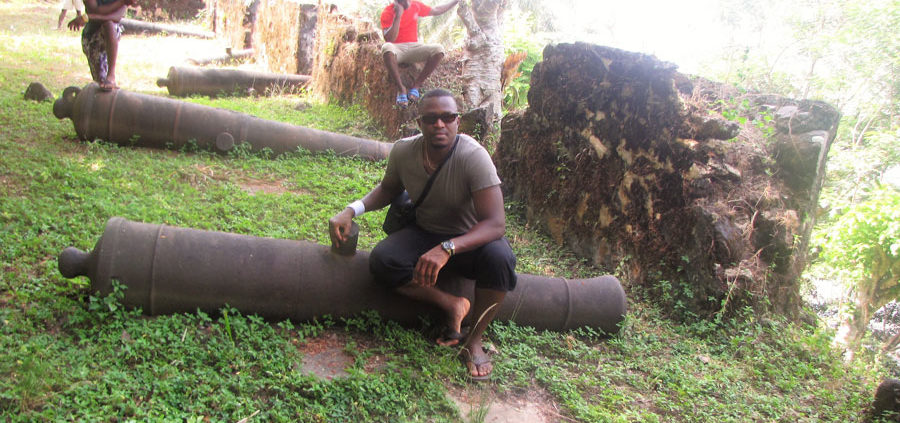Creating Visitability and Visibility through the ’Ruins’ of Bunce Island
Heritage Tourism Development in Sierra Leone
By: Ishmael Kargbo
The tourism industry in Sierra Leone is experiencing an unprecedented growth in recent years and a moment of media attention. In most circles, the industry is argued to hold the greatest potential for a country so in dire need of providing a sustainable economic alternative to the overwhelmingly dominant mineral resources economy. Beyond her iconographic landscape, much of the recent development in the industry is attributed to the uplifting of its rich heritage. In a way of widening the touristic gaze in Sierra Leone, recent efforts by the Relics Commission of Sierra Leone have put the spotlight on the country’s heritage. As as destinations are becoming increasingly aware of the importance of maximizing their heritage potential, big players jockeying for market share in general clog the industry. To quote Dr. Dieke, “global tourism is highly competitive in terms of price and customers satisfaction, given that tourists are priceconscious, rather than price-takers and that many destinations offer similar attractions”. To remain visible, the National Tourist Board of Sierra Leone and other national agencies are promoting the country’s heritage to attract the price-sensitive tourist market as the needs and wants of tourists remain fluid.
Locals and international tourists view national heritage alike, as a unique tourist offer in such a highly competitive environment. Motivations for tourism from a customer perspective are gradually changing. This has prompted in a modest way a move away from the old-style standardized rigid motivations such as sun and bath, hotel experience and wildlife etc. With national heritage as a quintessential part of Sierra Leone’s touristic offer, it has been the element of uniqueness. Creating visibility and visitability of the country’s touristic potential is the driving force behind the growing tourism industry in the country. Iconographically, Bunce Island is a great representation of the country’s heritage, and it is fast becoming a magnet for tourists. The Island is of historical importance and significance, not only to Sierra Leoneans, but also for the thousands of descendants of slaves living in the Americas.
The Island is one of Sierra Leone’s greatest tourist attractions, and it has come to represent an era of human depravation in the country’s history. I use the word ’ruin’ here to denote two intrinsic elements associated with the Island; human and infrastructural ruin, and how these elements of the Island’s history are now used for image reconstruction and representation in tourism promotion. Firstly, Bunce Island was a British slave trading post in the 18th century, where thousands of Sierra Leoneans who were forcefully kept in its dungeons, were later shipped as human cargo over the Atlantic. This element constitutes the ruin of human lives and barbarity against humanity. Secondly, decades of neglect have seen the gradual dilapidation of the physical structures, which were once erected to ensure the enslavement of the captives. The physical structures are no longer seen as they once were, and the decaying walls and other artefacts like the abandoned canons on the Island’s shore are a stark reminder of the importance of this once thriving commercial fortress. For the purpose of image construction and tourism promotion, the history of the people that were enslaved is an integral element in this construction of the heritage site. It is a marker that highlights the importance of the Island and it gives meaning for the tourist gaze. The Island has a certain appeal to the tourists i.e, its history, wrapped in misery and the decadence of its dissipating artefacts. Physical presence on the Island gives value to the whole experience of the enslaved.
The infrastructural ruins have remained visibly on display because the island is uninhabited, and such artefact have given authenticity to the history of the Island. They have become touristic attractions that are symbolic of the activities, which took place in the Island’s dark history. Consequently, such ruins on display make part of the present of the Island. They give a visual impression of the Island that enriches and shapes the touristic gaze.
The history of the Island has come to be a treasured part of Sierra Leone’s national identity. The forceful submission of the Africans who were held captive on the Island, their dehumanization and commodification thereof compels the preservation of that part of history. It is a history that becomes acute as it represents some sort of inheritance that must be passed down to current and future generations. And the urge to inform generations thereafter, inspires curiosity among visitors, locally and internationally. The identity of the Island is interwoven with the national identity of Sierra Leone, with an eye bulging history filled with a sad development of the nation. The geographical isolation of the Island and the fading away of its monumental structures have imbibed an awakening of national spirit to behold. The dual processes of protecting its heritage on the one hand, and creation of visuality and visitability on the other hand have now become part of the touristic supply.
Ruins of the canons and the crumbling walls of the fortress on exhibition on the Island are all evidence enough to convince tourists about what took place back in history. They are deliberately left scattered around in order to provide cultural meaning. The ruins are an endangered authenticity that needs to be protected. Increase care for heritage will create a new positive image for the Island and it will subsequently increase value for tourists. The image of the Island is linked to both aspects of the ruin as discussed here. Bunce Island’s history provides an emotional connection with locals and tourists, and the structural ruins and the history behind them could be commodified as touristic pruducts, when properly packaged. A common feature of the Island is that commodification remains prominent both in the past and present. In creating contemporary visibility and visitability, the past is re-packaged as an authentic national identity, and it meaningfulness is commercialized internally and externally.


Lämna en kommentar
Want to join the discussion?Feel free to contribute!